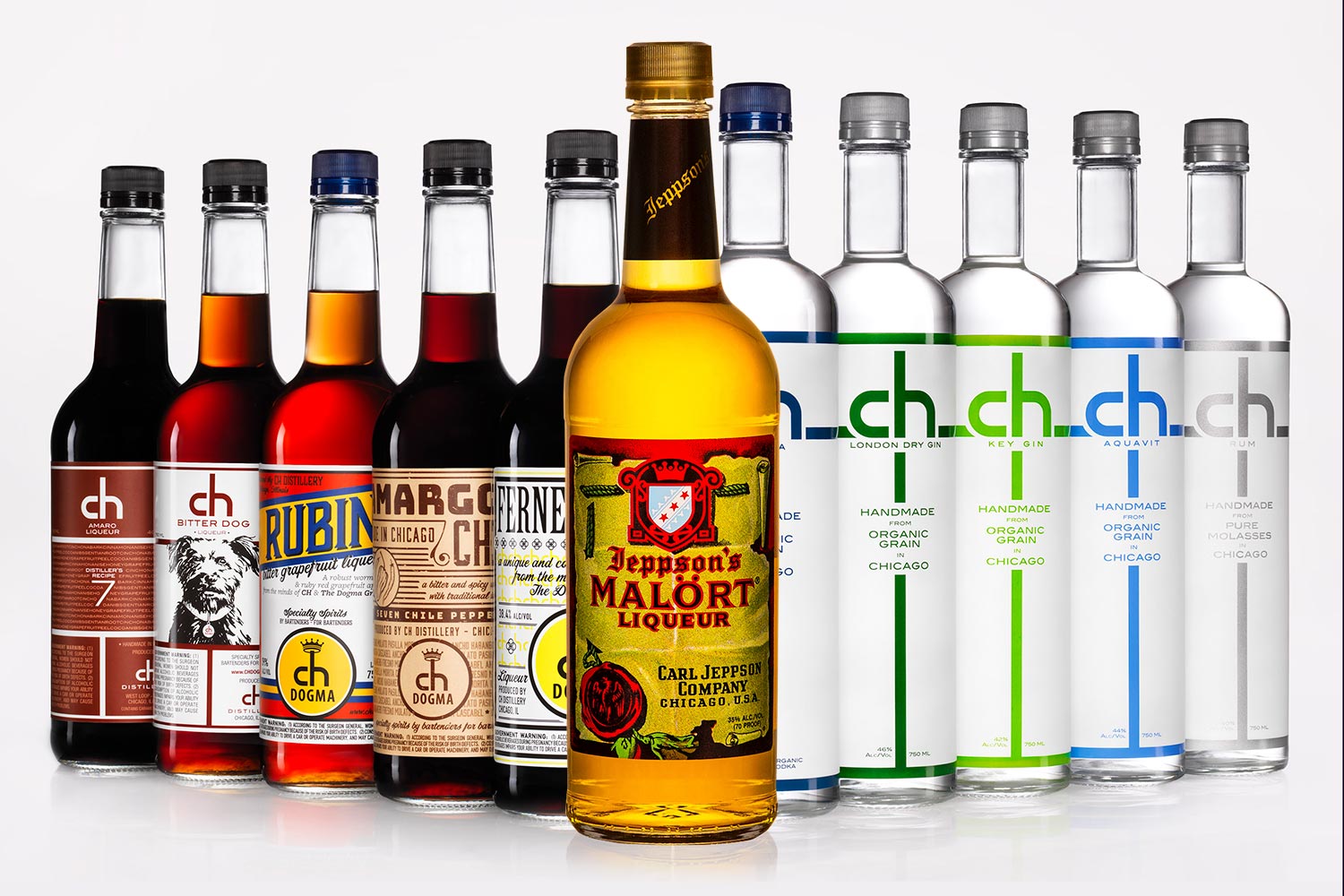When CH Distillery announced that they were bringing the production of Malört, the most Chicago of all spirits, back to Chicago last fall, the collective reaction was probably: “Wait, Malört isn’t made in Chicago?”
Actually, the product had been made in Florida since the mid-’70s, though Jeppson’s was still owned by a Chicagoan. That all changed last year, when CH bought the brand. Now it’s come home, produced out of CH’s new distillery in Pilsen.
CH Distillery has been open since 2013 and started out as a cocktail bar and distillery space in West Loop. Owner Tremaine Atkinson’s original goal was to do a true grain-to-bottle distilling operation. While most consumers don’t realize it, most “craft spirits” aren’t actually distilled from grain, and especially not from local grain — they’re made using mass-produced neutral spirits.
“We were the ones who decided to make vodka from Illinois grain,” Atkinson says.
He’s still got the cocktail bar, but production has mostly moved to Pilsen. When I first interviewed Atkinson back in 2013 for Serious Eats, he showed off the Randolph Street facility and all of its excess capacity — CH, he said, had more capacity than they would ever need. In reality, CH was so successful that it took only four years to entirely outgrow that space; now it distills more than 40,000 cases of liquor a year.
Over the years, CH has distilled more than 35 different products. The most popular is still their flagship vodka, but they also make gin, rum, liqueurs, and even bottle a bourbon (though they don’t make it on site). CH is also known for some of its more esoteric liqueurs, which allow Atkinson to flex his creative muscles. Sometimes they’re surprisingly popular, like CH’s Amargo de Chile liqueur, based on a mole recipe and packing a hefty dose of heat. Others, not quite so much — for example, Atkinson still loves the original CH Amaro he created, but says they’ll never make it again. “It was obscure and weird and nobody cared.”
While producing all these spirits, Atkinson had been trying to work some kind of Malört deal for years, but he had no intention of buying Jeppson’s — at most, just doing some packing or production work for them. After four years, just as he was about to give up, his phone rang with an offer from the owner, Pat Gabelick, to buy the entire brand.
“Not only could we bring it back to Chicago, but we could have it as part of our family,” Atkinson remembers. “It was almost too good to be true.”
Atkinson received the super-secret Malört recipe in an email after purchasing the brand. But there was one problem. “We sat down, made a test batch, and … it wasn’t right. It didn’t taste like Malört,” Atkinson says. “Over time, the recipe had drifted.”
CH had to recreate it from scratch, but they didn’t change the flavor. Ultimately, the only thing that changed was the color: Jeppson’s made Malort with artificial yellow coloring, and CH Distillery doesn’t use artificial ingredients.
The acquisition of Malört instantly doubled the size of CH Distillery — they now make as much Malört as they do all their other products combined. But Malört fans need not fear: Nothing is going to change.
“The acquisition of Malört is like adopting an 85-year-old who’s kind of cranky but very popular — you’re not going to change them,” Atkinson says. “This beautiful, weird thing is not broken, so let’s not mess with it.”



